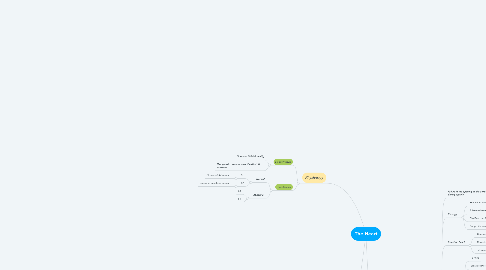
1. Physiology
1.1. Blood Pressure
1.1.1. Normal= 120/80 mmHg
1.1.2. The systolic pressure over the diastolic pressure
1.2. Heart Sounds
1.2.1. Normal
1.2.1.1. S1
1.2.1.1.1. Closure of AV valves
1.2.1.2. S2
1.2.1.2.1. closure of semilunar valves
1.2.2. Abnormal
1.2.2.1. S3
1.2.2.2. S4
2. Anatomy
2.1. Surface Anatomy
2.2. Anatomy of Valves
2.2.1. Tricuspid
2.2.1.1. has 3 cusps
2.2.1.2. lies in 4 IC space
2.2.2. Mitral
2.2.2.1. has 2 cusps
2.2.2.2. Lies in 4 CC
2.2.3. Aortic
2.2.3.1. has 3 cusps
2.2.3.2. lies in 3 IC
2.2.4. Pulomary
2.2.4.1. has 3 cusps
2.2.4.2. lies in 3 CC
2.2.4.3. posterior sinuses give rise to coronary arteries
2.3. Blood Supply of the Heart
2.3.1. Coronary Arteries
2.3.1.1. Right Coronary artery
2.3.1.1.1. Posterior descending artery
2.3.1.1.2. Right marginal artery
2.3.1.2. Left coronary artery
2.3.1.2.1. Left circumflex artery
2.3.1.2.2. Left anterior descending artery
2.3.2. Coronary veins
2.3.2.1. Drain into Coronary sinus
2.3.2.2. Great cardiac vein
2.3.2.3. Middle cardiac vein
2.3.2.4. Small cardiac vein
2.3.2.5. Oblique Cardiac vein
3. Pathology
3.1. Arotic Stenosis
3.1.1. Failure in the opening of the aortic valve during systole
3.1.2. Etiology
3.1.2.1. Rheumatic valvulitis
3.1.2.2. Subacute bacterial endocarditis
3.1.2.3. Clacification of Aortic valve
3.1.2.4. Congenital vavlular heart disease
3.1.3. Effect on heart
3.1.3.1. Coronary and cerebral insufficiency
3.1.3.2. Cocenteric left ventircular hypertrophy
3.1.3.3. left sided heart failure
3.1.4. Clinically
3.1.4.1. Fainting
3.1.4.2. Breathlessness
3.1.4.3. Chest tightness/pain
3.1.4.4. palpitaions
3.1.4.5. Heart murmurs
3.1.4.6. Exhaustion upon mild exertion
3.1.5. Treatment
3.1.5.1. Valve replacement
3.1.5.1.1. Could be
3.1.5.1.2. complications
3.2. Rheumatic Fever
3.2.1. Bacterial infection
3.2.1.1. Caused by group A beta hemolytic strep
3.2.2. age: 6-16
3.2.3. MC in low socioeconomic statuses
3.3. Ischemia
3.3.1. decrease of blood flow to an organ
3.3.2. always leads to hypoxia
3.3.3. doesn't lead to death of tissues
3.4. Hypoxia
3.4.1. decrease of oxygen in tissue
3.4.2. doesn't lead to ischemia
3.4.3. leads to death of tissues
3.5. Chest Pain
3.5.1. trauma
3.5.2. CV and lung problems
3.5.3. GIT problems
3.5.4. MSK problems
3.5.5. Viruses
3.5.6. Psychological
3.6. Dizziness
3.6.1. having or involving a sensation of spinning around and losing one's balance
3.6.2. due to:
3.6.2.1. Not enough blood reaching the brain
3.6.2.2. Heart problems
3.6.2.3. anemia
3.6.2.4. Blood pressure
3.6.2.5. Blood sugar
3.6.2.6. medications
3.6.2.7. dehydration
3.6.2.8. Old age
